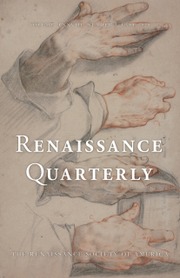The multifaceted reception of Pia desideria by South Netherlandish Jesuit Herman Hugo, issued first in Antwerp in 1624, presents a phenomenon that raises interests among scholars of different disciplines in humanities. This cannot astonish, if we consider its recognition as the most popular religious emblem book during the seventeenth century. The potential attractiveness of Hugo’s collection enabled it to transcend confessional barriers and become widespread not only within the Catholic world in and out of Europe but also within Protestant milieus. Though generations of scholars have devoted multiple studies to this subject, many essential issues have not yet been undertaken. Therefore, new research and findings are still needed, particularly ones that adopt interdisciplinary approaches. Grześkowiak’s concise but informative monograph, exploring literary echoes of Pia desideria in the Polish-Lithuanian Commonwealth, results from many years of intensive research he has conducted on that topic. Like Feike Dietz’s 2012 study on the interconfessional influence of Hugo’s work in the Northern Netherlands, Grześkowiak’s book applies philological methods first and foremost. However, it is the interdisciplinary character of his volume, along with its holistic scope, that opens a new perspective in the examined matter.
To explain the eager reception of Pia desideria, Grześkowiak starts by considering potential reasons for its popularity. He points first at its erotic origins related to bridal mysticism based on the Song of Songs, its strong affective appeal, and the emphasis put on internalized, universal devotion in the Christian world. There is also the persuasive power of the engraved images, inscribed with thoroughly well-chosen biblical verses. Nevertheless, the entire book, with its structure of emblema quadruplex (fourfold emblem), has never been entirely translated into Polish. Instead, the vernacular authors decided to focus on one of its elements, which was regarded as potentially the most engaging for its intended audience. Accordingly, Grześkowiak identifies and analyzes this broad spectrum of reception patterns. The most extensively discussed category pertains to differentiated paraphrases based on its picturae (35–76). The main attention is paid to poetic adaptations by Jesuit Mikołaj Mieleszko (1657) and Zbigniew Morsztyn (ca. 1675), a member of the Polish Brethren (Unitarians). However, independent from the different confessional milieus of both writers, their works share common features. Apart from their contemplative and imaginative character, both works reveal the impact of Ignatian meditation with the help of images. In addition, Morsztyn avoided any allusions to Arian theology and made accurate use of the Catholic Bible translation by Jesuit Jakub Wujek. This may have resulted, Grześkowiak argues, from the crucial role of Princess Katarzyna Radziwiłł as the commissioner of both literary works.
To achieve a holistic image, Grześkowiak incorporates categories of testimonies that are known only from a few or even one example, such as handwritten subscriptions in engravings of prints or subscriptions accompanied to cycles of loose engravings. In addition, the study includes a survey of applications of Hugo’s emblems in painted decorations in the territory of Poland, mostly known from ecclesiastical space. It is noteworthy that the author corrects certain art historians who misidentified graphic patterns for some painted cycles. The accompanying excursus, dealing with neighboring countries such as Silesia, the Duchy of Pomerania, and the Duchy of Prussia, presents mostly Lutheran artworks and thus delivers an interesting context for the Polish examples.
The detailed analysis of individual phenomena leads Grześkowiak to draw important general conclusions. Among others, he identifies essential modes in which Hugo’s book could have been read—namely, meditative, exegetical and artistic ones, as well as spiritual romance (124–27). In addition, Grześkowiak reconstructs the general chronology of the book’s reception and supplements his remarks by pointing at different editions that might have been used as inspirational sources. He highlights how its readership widened among social groups, denominations (among others Calvinists and Polish Brethren), and genders. He argues convincingly that gender became the crucial factor in disseminating Polish adaptations of Hugo’s work. A number of commissions came from women unfamiliar with Latin, and these texts helped to spread Hugo among wider circles of women. It was not by chance that many adaptations were dedicated to aristocratic ladies. Moreover, noteworthy connections between the handwritten copies of Polish adaptations and female cloisters—in particular, Benedictine and Discalced Carmelite ones—testify to the substantial contribution of nuns in adapting Pia desideria in the discussed territory.
Grześkowiak’s monography delivers a comprehensive overview of the tendencies and patterns by which Hugo’s collection found its reception in the Polish-Lithuanian state. He designates the specific character of that reception, ranging from a broad dissemination of the Latin original through its translations into Polish, and from the new literary works inspired by the Latin original up to painted decorations in ecclesiastical space (127). As a result, the volume provides a substantial contribution to our knowledge about the reception of religious emblematic literature in general.



